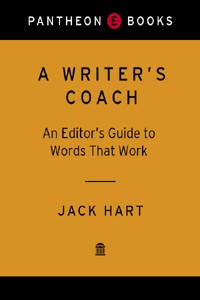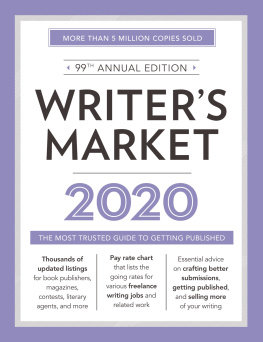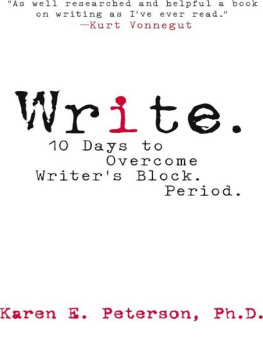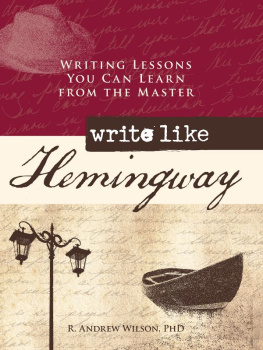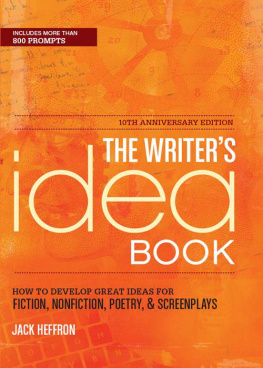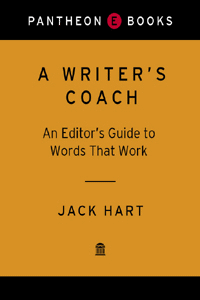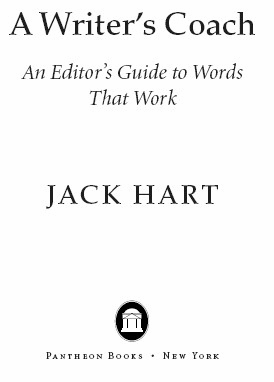CONTENTS
Cover Page
Title Page
Introduction
1. METHOD
2. PROCESS
3. STRUCTURE
4. FORCE
5. BREVITY
6. CLARITY
7. RHYTHM
8. HUMANITY
9. COLOR
10. VOICE
11. MECHANICS
12. MASTERY
Selected Resources for Writers
Acknowledgments
About the Author
Copyright
INTRODUCTION
You cant wait for inspiration; you have to go after it with a club.
Jack London
Novices sometimes imagine writing as dark magic, something known only to some mystical inner circle. They pick up a professionals finished work, marvel at its seamless perfection, and think, I could never do that .
Nonsense. Take it from someone whos been scouting around inside the mystic circle for decades. I work shoulder to shoulder with some of the best writers on the planet, and never once have we danced around a cauldron. Some hocus-pocus might help, but we dont know any. So we just get down to work.
Great writing happens not through some dark art, but when method meets craft. The secretif there is oneis to take one manageable step at a time. Superman may leap tall buildings in a single bound, but the best writers I know sit down at their keyboards and write one line. And then another. And another.
Thats how its done, in writing or anything else. Picasso crafted accomplished landscapes and portraits before he broke through into the terra incognita of cubism. Thomas Edison, the most prolific inventor of all time, broke innovation down into a step-by-step process for methodical efficiency. Genius, he famously said, is 1 percent inspiration and 99 percent perspiration.
Writing poses challenges similar to any other creative process. At the Nieman Conference on Narrative Journalism, a big-deal gathering that draws hundreds of nonfiction storytellers to Harvard each fall, a participant asked Morgan Entrekin, president and CEO of Grove/Atlantic Press, whether talent or hard work counted more among book authors. Talent matters, he said. But the writers who can manage their time and energy well show the best results in the long run. Then he pleaded with the writers in the room to do a better job of getting their manuscripts in on time.
Plenty of dull, disorganized writers meet their deadlines, of course, just as some of the most inspired live chaotic lives of confusion and angst. But the most successful writers I know have mastered a productive, efficient process that consistently turns out great work. They write without psychological meltdown, and they make deadline.
Yes, talent counts for somethingsuperhuman performances in any field probably require hard wiring that sets the performers apart. Writing is no different. But for most of us, thats beside the point because we have no choice but to write. A certain skill with the written word is essential to almost anybodys success in the modern world: the cop filing a report, the foundation director pitching a grant, the moonstruck kid e-mailing flirtatious notes to that smokin sophomore in third-period algebra. Whether we get what we want out of life depends, more or less, on how well we use writing to accomplish it.
Most of us dont do nearly as well as we might, largely because of that nonsensical notion that good writing is magic. Schools carry much of the blame. They teach that other essential skill of the modern agereadingas though its a universal that every student must master. Most students do. But the invidious mystique of writing taints the curriculum in almost every school. In literature classes, you read great works and marvel at the genius of the writers who produced them. In composition, you struggle to knock a few clumsy sentences together. Nobody expects you to see any connection between the divas aria and your Neanderthal grunts.
In 2001 Tom Hallman, one of the writers I work with regularly, won the Pulitzer Prize for newspaper feature writing. By the standards of our business, Tom is a certified genius. Hed been a Pulitzer finalist twice before, and over the years hes won everything from the Ernie Pyle Award to top national awards from the American Society of Newspaper Editors and the Society of Professional Journalists.
So when Tom gave me permission to post multiple rough drafts from his Pulitzer Prizewinning story on a Web site available to journalists across the country, interest was high, and the response was predictable. Toms fellow journalists were astounded to see how far the story developed over the last three drafts he produced. They, too, had been victims of the writing mystique, assuming that someone of Toms accomplishment would spin webs of gold the first time his fingers hit the keyboard. What they saw, instead, was a damned good writer hard at work, applying his method and honing his craft.
Toms first draft was just that, an initial run at the story that mixed great promise with plenty of disappointments. The second draft tied up loose ends, tweaked the structure, and sharpened the character development. The third polished the language, refined the imagery, and pushed through to the final level of excellence. Seeing that progression, one editor told me, was the most instructive lesson hed ever had in newspaper writing.
I trust this book offers lessons of similar value. Newspaper writing has a long track record as a doorway to writing skills with broader application. Walt Whitman, Ernest Hemingway, and Tom Wolfe all began as reporters. Like their modern counterparts, they faced implacable deadlines that left little time for what hard-boiled news writers dismiss as navel-gazing. The presses roll at the same time every day, and philosophical angst about their writing is a luxury journalists cant afford.
That pragmatic approach is a tremendous advantage whether youre trying to learn writing or to teach it. I started my career as a college professor with the requisite advanced degree and spent a dozen years teaching at big universities. That gave me a grounding in theory and plenty of practice communicating with novice writers. But I never really understood the importance of process and craft until I started meeting daily deadlines in the newsroom.
Youll notice the newspaper influence throughout this book. Much of it will be from The Oregonian, where Ive spent the past two decades. If youre not a newspaper writer, dont let that put you off. All writers face similar problems, regardless of their medium. Ive concentrated on down-to-earth, practical advice that should apply to almost any kind of writing, be it a novel, a memo, or a love letter.
The practical focus extends to the examples Ive used. When Ive written something to illustrate a point, my example is set off with quotation marks or in a block quote in roman type. But the vast majority of the examples Ive included were actually published somewhere, and each of those is set in italic type. Because I took them from the reading I did every day, over many years, they represent a tolerably good sampling of the hazards and opportunities any writer is likely to encounter in the real world.
Bad examples are unattributedthe point is to learn from mistakes, not to shame anybody with them. Good examples from publications other than my own are credited to their authors; the remaining examples come from The Oregonian .
My experience there has been central to my growth as a writing coach. I was lucky to arrive at the newspaper just before it began a long drive to improve its journalism. Thirty years ago it was a big regional newspaper with a nondescript reputation. It remains the largest daily newspaper in the Pacific Northwest, but now it also has a reputation as a writers newspaper, a place where words matter.

